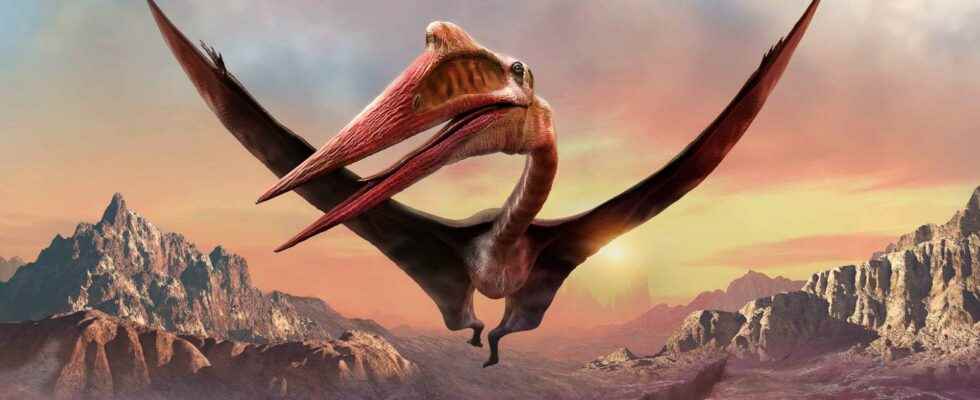Flying reptiles and giant birds now extinct once ruled the air. Did they use thermal currents or boundaries between air masses to save their energy? A research team has estimated what their flight techniques might be by comparing them with current birds.
You will also be interested
[EN VIDÉO] Interview: Are birds the last descendants of dinosaurs? With the multiple discoveries of feathered dinosaurs in China, the question arises of the link with birds. Could these be the descendants of these extinct creatures? Futura-Sciences interviewed Éric Buffetaut, paleontologist, to find out more about the issue.
How did gigantic extinct animals manage to fly? There were in fact reptiles ruffles such as Quetzalcoatlus northorpi and birds such as Pelagornis sandesi whose wingspans could respectively reach seventeen meters. This imposing size therefore had to be compensated by adaptations physical to allow the giants to take off but also by behavioral adaptations in order to maintain themselves in the tunes.
Current birds use two techniques in order to minimize their physical effort and hover in the air. Some, such as thealbatross howler, use the flight of gradient. This flight technique consists of passing from one mass of air to another several times and allowing oneself to be transported by them. others species such as the California condor and the frigate superb, on the other hand, use thermal flight. The latter consists of using thermal currents, which are currents of convection vertical, to rise in the air without flapping its wings. In the absence of behavioral observations with respect to the species fossilsso how to determine the techniques they used?
Thermal flight, a recurring technique
A study published in the newspaper PNAS Nexus provides some answers to this question. The authors of the study notably analyzed the wingspans, weights and load in the air flying reptiles and extinct birds; they compared these measurements with those of modern birds whose flight techniques are known. They used aerodynamic models to determine the flight performance as well as the needs of speed of winds extinct giants. The authors were thus able to confirm the conclusions of previous studies which reported that Pteranodon (37 kg6 meters wingspan) and the magnificent Argentinian Argentavis magnificens (70 kg, 7 meter wingspan) used thermal flight.
However, their conclusions contradict those of previous studies on Pelagornis sandesi (40 kg, more than 7 meters wingspan) which seemed, according to this new study, also to use thermal flight and not gradient flight. They also indicate that Quetzalcoatlus (259 kg, more than 9.50 meters wingspan) was less adapted to thermal flight than current birds. According to the models, its flight performance was indeed weaker than that of theheaviest current flying bird (the kori bustard, which weighs 12 kg and has a wingspan of 2.5 meters), which itself spends most of its time on the ground and only flies away in case of danger. The giant Quetzalcoatlus therefore had to be on the ground often and had to have poor flying skills.
Interested in what you just read?
